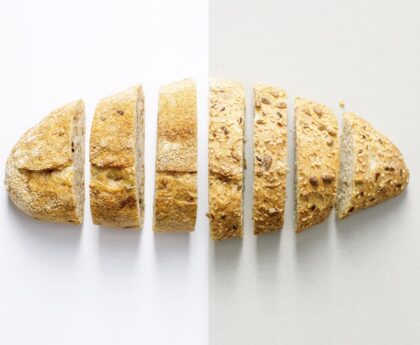It takes science to effectively store food. This is so that various foods might have varying needs. Sometimes it’s not the best idea to use the refrigerator. You can extend the shelf life of your food if you know how to store it properly. How and where to keep bread, pasta, fruit, and vegetables are shown here.
Not all foods like it to be equally heated, dry, or moist. Food degrades more rapidly or loses flavor if it is improperly kept. You’ll need a fundamental collection of containers and the right information about food storage to prevent this. We have provided you with a summary of the most crucial details.
Baked items and bread
To keep bread from drying out while being stored for a long period, place it in a container with a cover or a bread box. But plenty of people keep their bread in a plastic bag. The drawback is that fresh loaves soften very rapidly in airtight container. So that they may be consumed quickly, store crispy baked foods in an airy location, such as in the baking bag.
Bread may rot for a number of reasons, not only from drying out. The likelihood of water accumulating and mold growing rises if the air cannot circulate and the atmosphere is excessively humid. Mold has greater surface area to attack on sliced bread. Therefore, buying bread by the slice is preferable. Mold development is made more difficult by the crumbs that are scattered throughout the bread box. Every few days, take them out and clean the box with vinegar and water. Bread can, if required, be kept in the fridge in warm, muggy weather. The bread is then more shielded against mold, especially white bread. On the other hand, rye-based baked items soon go bad if the temperature is too low. If in doubt, bread and loaves can be safely frozen and cooked at a later time.
Spatzle and pasta
Noodles, spatzle, and other types of fresh pasta are particularly prone to infection. They can remain in the refrigerator for three to four days if properly stored. Pasta leftovers should be kept in the refrigerator’s upper shelf. There, it will persist for one to two days. Pasta won’t harden if it is kept in closed containers after being cooked.
Make sure you just cook the pasta until it is firm to the bite if you want it to last as long as possible. You can tell the gnocchi and spatzle are done when they float to the top. It is recommended to allow the remaining pasta cool for two to three hours after cooking. By doing this, condensation that may subsequently collect and cause the pasta to become mushy is avoided. To prevent your pasta from sticking together in a lump after cooking, pour cold water over it momentarily. Alternatively, let it cool spread out on an oiled baking pan.
Pasta that has been dried will last for at least a year. It’s crucial that you keep them dry, sealed, and at room temperature. This is due to the fact that they are especially vulnerable to pests like moths, just like other dry items like wheat, muslin, or tea.
Veggies and fruits

Vegetables of almost every variety can be refrigerated. Only cucumbers, tomatoes, potatoes, and eggplants should not be stored at such low temperatures.
Fruit makes it more difficult. Some fruit varieties can only be refrigerated in an open plastic bag to maintain their freshness and vitamins; other fruit varieties are susceptible to cold. The general rule is that although domestic fruit like apples, cherries, and plums may be kept cool, foreign fruit like mangoes, bananas, and citrus fruits shouldn’t be kept in the refrigerator. Kiwis and figs are exceptions.
Over time, certain fruits and vegetables produce the ripening gas ethylene. Other fruits and vegetables mature and deteriorate more quickly as a result. The fruits and vegetables that create the most ethylene include tomatoes, apples, apricots, and plums. Separate storage of these fruits and vegetables is the best strategy to avoid early deterioration.
Purchased too much? Fruits and vegetables can both be canned or frozen. Vegetable leftovers can also be preserved in oil or vinegar.
Pay close care to cooling and cleanliness
It’s crucial to pay attention to the essential hygiene and refrigeration in order to achieve optimum shelf life with the appropriate storage, and it all starts at the supermarket. When shopping, pay particular attention to loose items and search for unbroken packaging if the product will be kept for a long time. Continuous chilling is essential for refrigerated items because bacteria thrive in warm environments. Transportable special cooling packs are therefore appropriate. Perishables and frozen items should be added to the shopping cart last.
It’s crucial to wash your hands before sorting food at home to minimize the transmission of bacteria and germs. Hands should be properly washed for at least 20 seconds in order to totally eradicate germs. The storage place should be as spotless as possible, just like the hands. As a result, storage cabinets and shelves need to be cleaned often. The refrigerator presents the biggest risk of germs after the dishwashing sponge. Because plant wastes provide a particularly favorable environment for microbe growth, you should routinely clean out the vegetable section in particular. Mold may be avoided by cleaning with warm water and a small amount of cleaning solution, as well as by adding a dash of vinegar essence.




